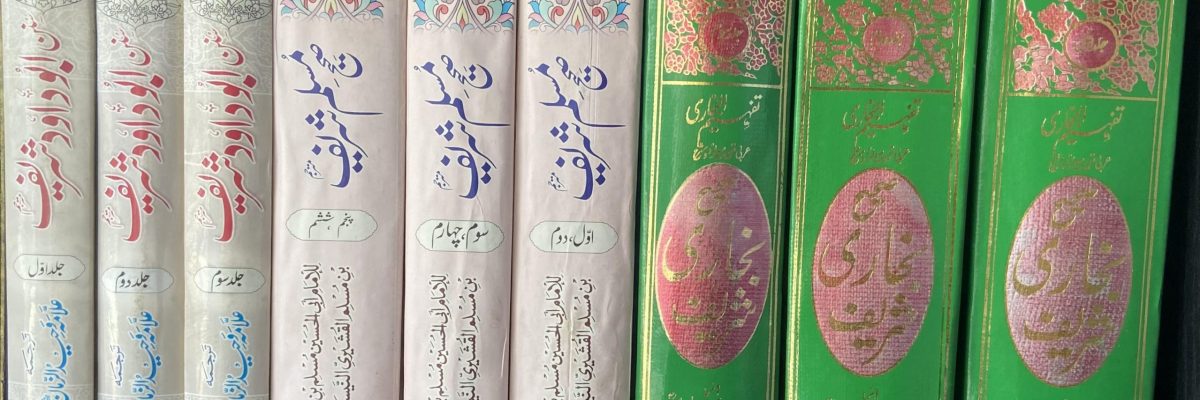Fatwa ID: 07541
Answered by: Maulana Yusuf Khan
Question:
I am reaching out with a question regarding AI and image generation. I recently came across a Hadith which is considered Sahih “The worst punishment on the Day of Resurrection will be for those who imitate the creation of Allah (by making pictures)” [Bukhari and Muslim].
It made me ponder about the permissibility of AI-generated images, especially those resembling human figures.
I’ve attached a few photos generated by AI. Could you kindly provide your insight into which images might be considered permissible (halal) and which might be deemed inappropriate or excessive?
Your guidance on this matter would be greatly appreciated.
In the name of Allah, the Most Gracious, the Most Merciful
Answer:
Narrated Sa`id bin Abu Al-Hasan:
While I was with Ibn `Abbas a man came and said, “O father of `Abbas! My sustenance is from my manual profession and I make these pictures.” Ibn `Abbas said, “I will tell you only what I heard from Allah’s Messenger (ﷺ) . I heard him saying, ‘Whoever makes a picture will be punished by Allah till he puts life in it, and he will never be able to put life in it.’ ” Hearing this, that man heaved a sigh and his face turned pale. Ibn `Abbas said to him, “What a pity! If you insist on making pictures I advise you to make pictures of trees and any other unanimated objects.” [1]
‘Aishah (May Allah be pleased with her) said:
The Messenger of Allah (ﷺ) visited me after returning from a journey, and I had a shelf with a thin cloth curtain hanging over it and on which there were portraits. When he saw it, the colour of his face changed (because of anger) and he said, “O ‘Aishah! The most grievous torment from Allah on the Day of Resurrection will be for those who imitate (Allah) in the act of His creation.” ‘Aishah said: We tore it into pieces and made a cushion or two cushions out of that. [2]
Along with the hadeeth you mentioned there are many views from scholars in regard to the permissibility of pictures.
The interpretation of what constitutes “imitating Allah’s creation” and the extent to which this applies to different forms of image-making (such as photography, digital art, and AI-generated images) has evolved with the advancements in technology.
Islamic scholars have different views on this topic, and it’s important to understand the various perspectives.
There is a distinction between someone who creates images with the intention of mimicking Allah’s creation, which could render them a disbeliever, and someone who creates images without that intent, who is still committing a sin but not at the same level of disbelief.
Those who create idols to be worshipped are seen as committing an even more grave crime.
Ibn Hajar has explained the above hadeeth with the following:
“There has been some confusion about the image-maker being the most severely punished person, given the verse in the Qur’an, ‘Enter the people of Pharaoh into the most severe punishment,’ which implies that the image-maker would be more severely punished than the people of Pharaoh.
Al-Tabari responded that the intended meaning here is someone who creates images of what is worshipped besides Allah, knowing this and intending it. Such a person becomes a disbeliever by doing so, and it is not far-fetched that they would face the same punishment as the people of Pharaoh. As for someone who does not intend that, they would merely be sinful for making images.” [3]
Scholars have classified image creation into two main categories:
Images of Inanimate Objects: The majority of scholars agree that images of inanimate objects such as landscapes, plants, or objects are permissible because they do not imitate living beings.
Images of Animate Beings (Humans, Animals):
Traditional Art: The classical stance, which is based on the hadith, is that drawing or sculpting full figures of animate beings is not allowed as stated by An-Nawawi R. [3]
Modern Technologies (Photography, Digital Art, AI): With the advent of photography and now AI-generated images, scholars have debated whether these forms of image-making fall under the same category as traditional drawings.
Photography, for instance, is generally viewed as permissible by many contemporary scholars because it is seen as a mere reflection of what already exists, unlike drawing or sculpting.
Mufti Taqi Uthmani has touched on this, explaining the hadeeth about how images on a screen are not the same as drawings which is stated in the hadeeth. [4]
When it comes to AI-generated images, the following points can help assess the permissibility:
Nature of Creation: AI-generated images are produced by algorithms and do not involve direct handcrafting, which some scholars might argue makes them more similar to photography than traditional drawing.
Since the images are not physical or hand-drawn, some contemporary scholars lean toward permissibility, provided the content is not inappropriate or excessive.
Degree of Realism: If the AI-generated images are highly realistic representations of human figures, they may be more problematic than abstract or cartoon-like representations. The closer the image is to real life, the more it might be viewed as “imitating creation.”
Purpose and Intent: The intent behind creating the image also plays a role in determining permissibility. If the images are used for educational or professional purposes, many scholars see this as permissible, especially in fields like medicine, education, or technical demonstrations.
Avoiding Idolatry and Immorality: The prohibition of image-making is closely tied to the fear of idolatry and the promotion of immorality. If the AI-generated images are devoid of such concerns, they may be considered permissible.
In regards to the pictures you have sent, some of them portray images of women who are exposing their awrah, this is an example of what would not be allowed. As long as the images are in line with what is permissible and are used for purposes of necessity such as education and purposes of benefit then it will be considered permissible. This is because it is not considered the same as drawing as mentioned in the hadeeth.
Only Allah knows best
Written by Maulana Yusuf Khan
Checked and approved by Mufti Mohammed Tosir Miah
Darul Ifta Birmingham
[1] Sahih ul Bukhari – Hadeeth: 2225
[2] Riyaadu Saliheen – Hadeeth: 1679
“يا عائشة، أشد الناس عذابًا عن الله يوم القيامة الذين يضاهون بخلق الله
[3] Fathul Baari- Volume 10 – Page 383:
وَاخْتلفت نَسْخُهُ فَفِي بَعْضِهَا الْمُصَوِّرِينَ وَهِيَ لِلْأَكْثَرِ وَفِي بَعْضِهَا الْمُصَوِّرُونَ وَهِيَ لِأَحْمَدَ عَنْ أَبِي مُعَاوِيَةَ أَيْضًا وَوُجِّهَتْ بِأَنَّ مِنْ زَائِدَةٌ وَاسْمُ إِنَّ أَشد ووجهها بن مَالِكٍ عَلَى حَذْفِ ضَمِيرِ الشَّأْنِ وَالتَّقْدِيرُ أَنَّهُ مِنْ أَشَدِّ النَّاسِ إِلَخْ وَقَدِ اسْتَشْكَلَ كَوْنُ الْمُصَوِّرِ أَشَدَّ النَّاسِ عَذَابًا مَعَ قَوْلِهِ تَعَالَى ادخُلُوا آل فِرْعَوْن أَشد الْعَذَاب فَإِنَّهُ يَقْتَضِي أَنْ يَكُونَ الْمُصَوِّرُ أَشَدَّ عَذَابًا مِنْ آلِ فِرْعَوْنَ وَأَجَابَ الطَّبَرِيُّ بِأَنَّ الْمُرَادَ هُنَا مَنْ يُصَوِّرُ مَا يُعْبَدُ مِنْ دُونِ اللَّهِ وَهُوَ عَارِفٌ بِذَلِكَ قَاصِدًا لَهُ فَإِنَّهُ يَكْفُرُ بِذَلِكَ فَلَا يَبْعُدُ أَنْ يُدْخَلَ مُدْخَلَ آلِ فِرْعَوْنَ وَأَمَّا مَنْ لَا يَقْصِدُ ذَلِكَ فَإِنَّهُ يَكُونُ عَاصِيًا بِتَصْوِيرِهِ فَقَطْ وَأَجَابَ غَيْرُهُ بِأَنَّ الرِّوَايَةَ بِإِثْبَاتِ مِنْ ثَابِتَةٌ وَبِحَذْفِهَا

